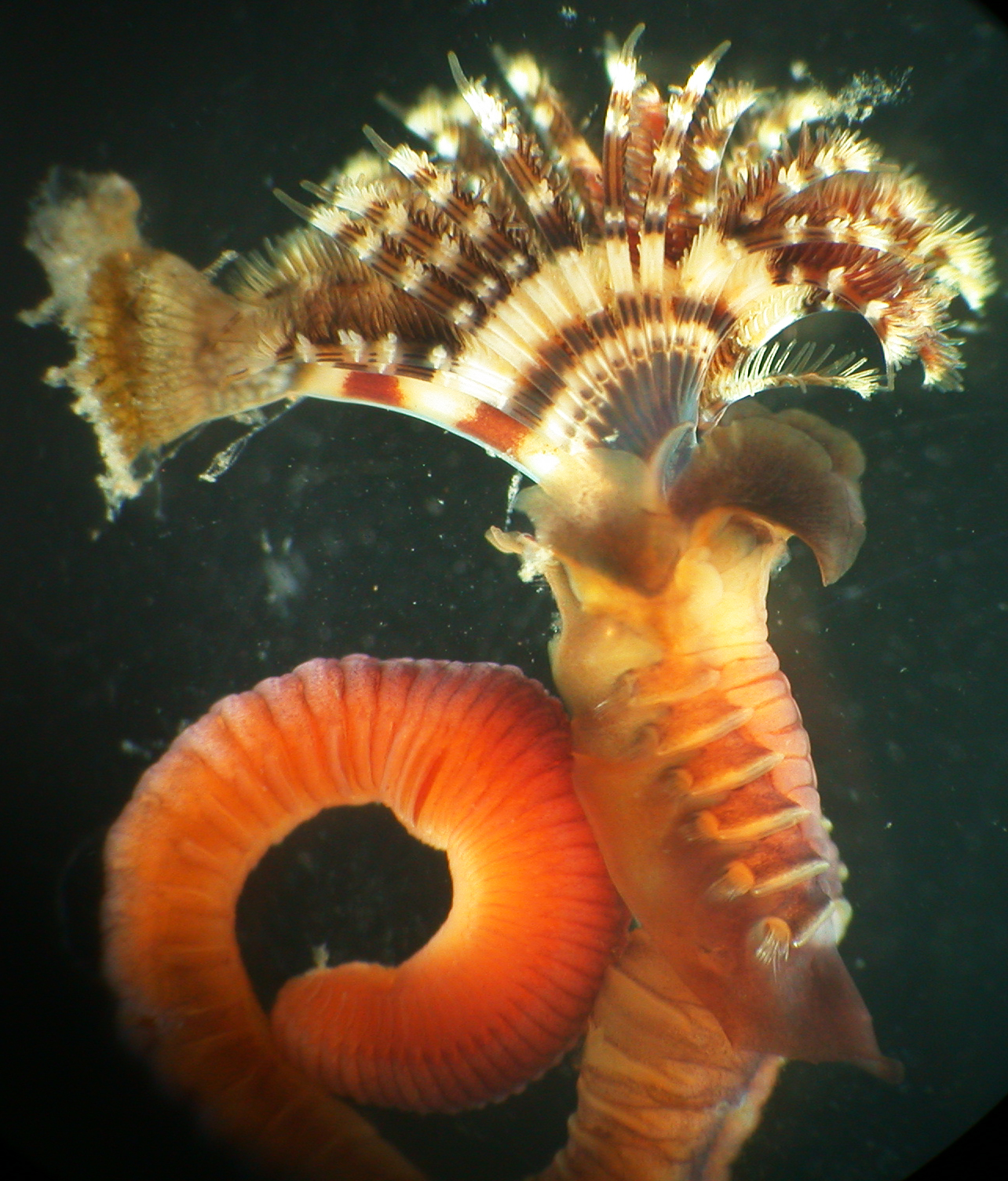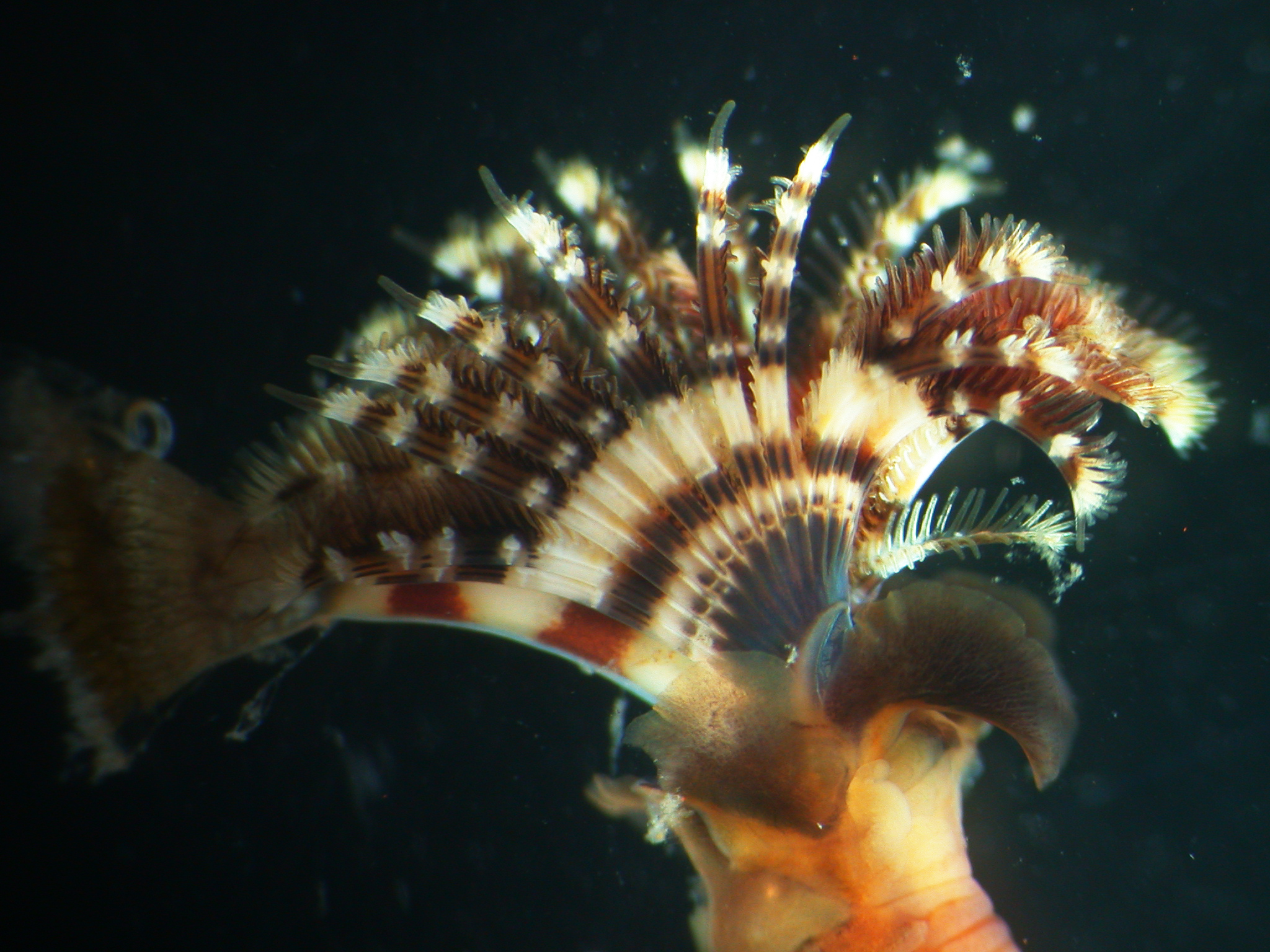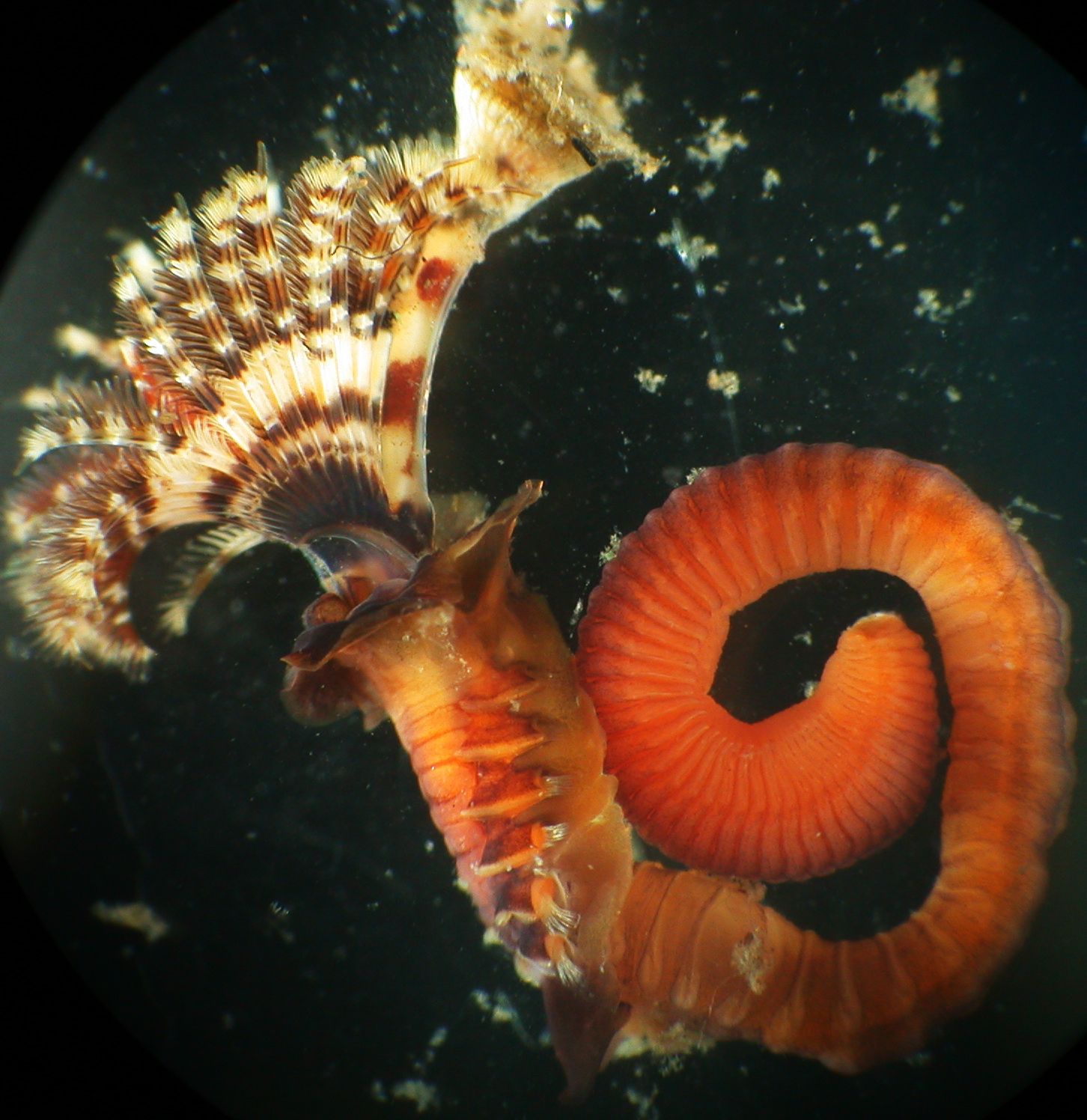A polychaete was obtained among laminarian holdfast at Oshoro Bay, Hokkaido, Japan, about 43°12′N, 140°51′E, on 23 May 2011 by Shotaro Aoe, photographed and identified by Hiroshi Kajihara as Hydroides ezoensis Okuda, 1934 based on Okuda (1934). The anterior half of the specimen was fixed in 10% formalin seawater, while the posterior half was in 99% EtOH. DNA was extracted from the EtOH-fixed tissue, using the silica method (Boom et al. 1990) with some modifications. Extracted DNA was dissolved in 30 μl of deionized water and has been preserved at –20°C. Remaining morphological voucher specimen has been deposited at the Hokkaido University Museum under the catalogue number ICHU22090017 (contact: Dr. Hiroshi Kajihara, kazi@mail.sci.hokudai.ac.jp).
Amplification of mitochondrial cytochrome c oxidase subunit I gene (COI) using LCO1490 (5′-GGTCAACAAATCATAAAGATATTGG-3′) and HCO2198 (5′-TAAACTTCAGGGTGACCAAAAAATCA-3′) (Folmer et al. 1994) was unsuccessful.
An about 1.2K-bp fragment of 28S rRNA gene was amplified by polymerase chain reaction (PCR) using LSU5 (ACCCGCTGAAYTTAAGCA) and LSU3 (TCCTGAGGGAAACTTCGG) (Littlewood. 1994). A hot start PCR was performed by a thermal cycler, iCycler (Bio-Rad), in a 20-µn;l reaction volume containing 1 µn;l of template total DNA (approximately 10?E00 ng) and 19 µn;l of premix made with 632-µn;l deionized water, 80-µn;l Ex Taq Buffer (TaKara Bio), 64-µn;l dNTP (each 25 mM), 8-µn;l each primer (each 10 µn;M), and 0.1-µn;l TaKara Ex Taq (5 U/µn;l,TaKara Bio). Thermal cycling condition comprised an initial denaturation at 95°C for 30 sec; 30 cycles of denaturation at 95°C for 30 sec, annealing at 45°C for 30 sec, and elongation at 72°C for 45°C and a final elongation at 72°C for 7 min.
The PCR product was purified with the silica method (Boom et al. 1990). Both strands were sequenced with a BigDye® Terminator v3.1 Cycle Sequencing Kit (Applied Biosystems) following the manufacturer's protocol, using the same primer set as the initial PCR amplification. Sequencing was performed with ABI Prism 3730 DNA Analyzer (Applied Biosystems). Chromatogram and sequence data were operated with MEGA v4 software (Tamura et al. 2007).
Results
A total of 672 bp of 28S sequence was determined from Hydroides ezoensis Okuda, 1934 (see Appendix).
Taxonomy
Phylum Annelida
Class Polychaeta
Order Sabellida
Family Serpulidae Okuda, 1940
Genus Hydroides Gunnerus, 1768
Hydroides ezoensis Okuda, 1934
(Figs 1–3)
Hydroides ezoensis Okuda, 1934: 239, figs 5–7.

Fig. 1. Hydroides ezoensis Okuda, 1934 (ICHU22090017), tentacle and operculum.

Fig. 2. Hydroides ezoensis Okuda, 1934 (ICHU22090017), magnification of tentacle.

Fig. 3. Hydroides ezoensis Okuda, 1934 (ICHU22090017), overall view.
References
Boom, R., Sol, C. J. A., Salimans, M. M. M., Jansen, C. L., Wertheim-van Dillen, P. M. E., and van der Noordaa, J. 1990. Rapid and simple method for purification of nucleic acids. Journal of Clinical Microbiology 28: 495–503.
Folmer, O., Black, M., Hoeh, W., Lutz, R. and Vrijenhoek, R. 1994. DNA primers for amplification of mitochondrial cytochrome c oxidase subunit I from diverse metazoan invertebrates. Molecular Marine Biology and Biotechnology 3: 294–299.
Littlewood, D. T. 1994. Molecular phylogenetics ofcupped oysters based on partial 28S rRNA gene sequences. Molecular Phylogenetics and Evolution 3: 221–229.
Okuda, S. 1934. Some tubicolous annelids from Hokkaido. Journal of the Faculty of Science, Hokkaido Imperial University, Series VI, Zoology 3(4): 233–246.
Tamura, K.,Dudley, J., Nei, M. and Kumar, S. 2007. MEGA5: Molecullar Evolutionary Genetics Analysis (MEGA) software version 4.0. Molecular Phylogenetics and Evolution 24: 1596–1599.
Appendix
Partial 28S rDNA sequence (672 bp) from ICHU22090017 identidied as Hydroides ezoensis Okuda, 1934.
TAGCACACGTATAGCCGACCCCCCTAGTCTGACCCCAACACCAATCAGTCGGACAGGGCACTGCACGCAGTCCCCGCCAGTCGATGGCAAGTCAGGCGACCAGGGCAACATATACGCGGCCCGAGCTCCTCGCTCACCCAACCAGTCAGCAACTCCACGGACCTATAAGTTCCACGAGCGGTGAAGCAAGTGGCTACCTTGTCCGGGCACCTCTGATGGTCAGGCAAACCGTTGTGGTGCTCAGCGACGGGAAAATGCGTCCACTCGATGCCAGTCACCAGACCACCAACCGCACTGCCCAATCGGACATGCTACGGCTGGCGCGGCAGCAACGAAGTGAATTGAATCCCCGAAGCCGACATTGCGGTCCCTTCCGTTTACCTGTAAACGGTTTCACGTACTGTCCAACTCTCTCTTCAAAGTGCTTTTCAACTTTCCCTCACGGTACTTGTTTGCTATCGGACTCGTGCCTGTATTTAGCCTTAGATGGAGTTTACCACCCACTTTGGGCTGCATTCTCAAACAACCCGACTCCGAGGAGCGCCCTAGCGACGACGTGCCAAAGTCAAATAGGCCTTACACCCGCTATGGGTCAAGCCTCGCTCAAGAGAACGCAGACAATACACAGACGCCTCAGAGACACTCCCAAACCCCACAGGTCCTAGCAGACAT